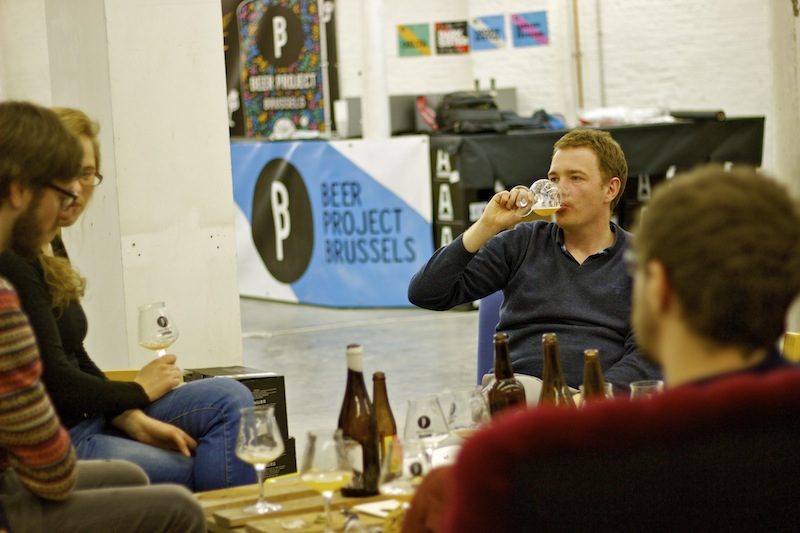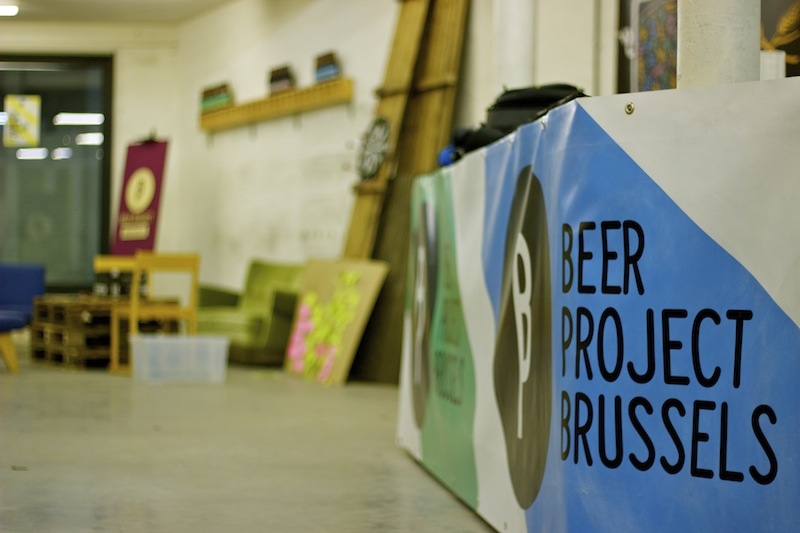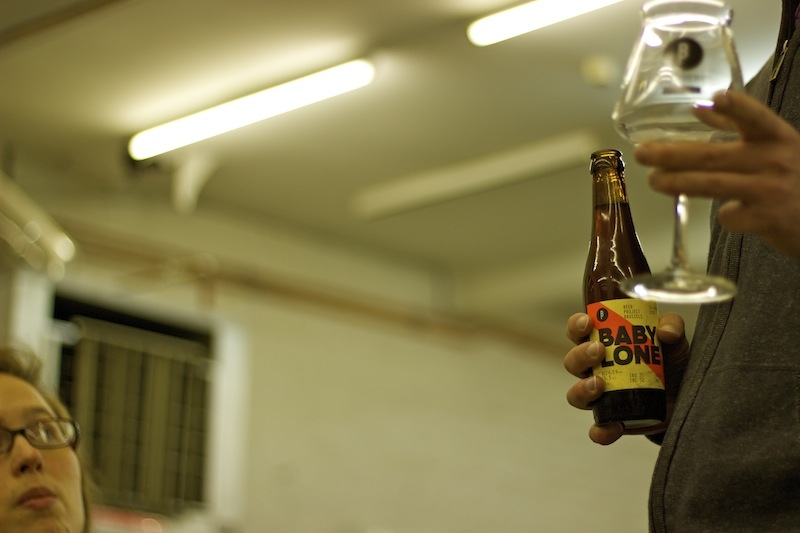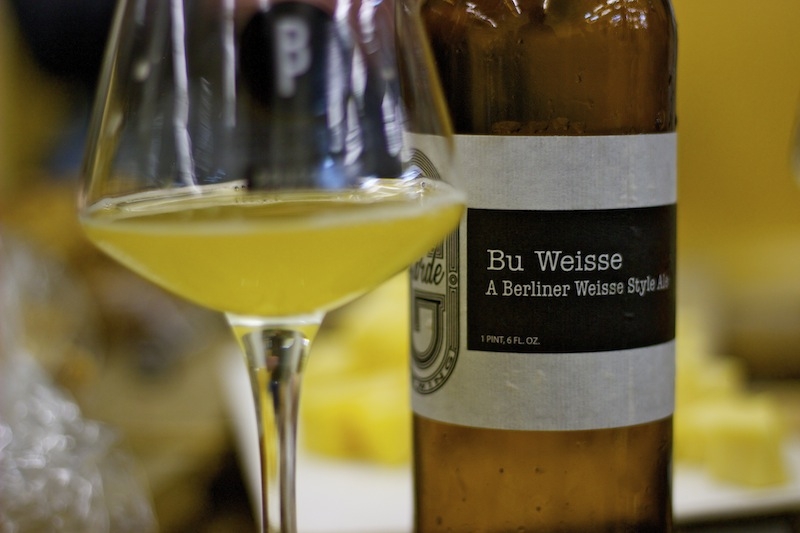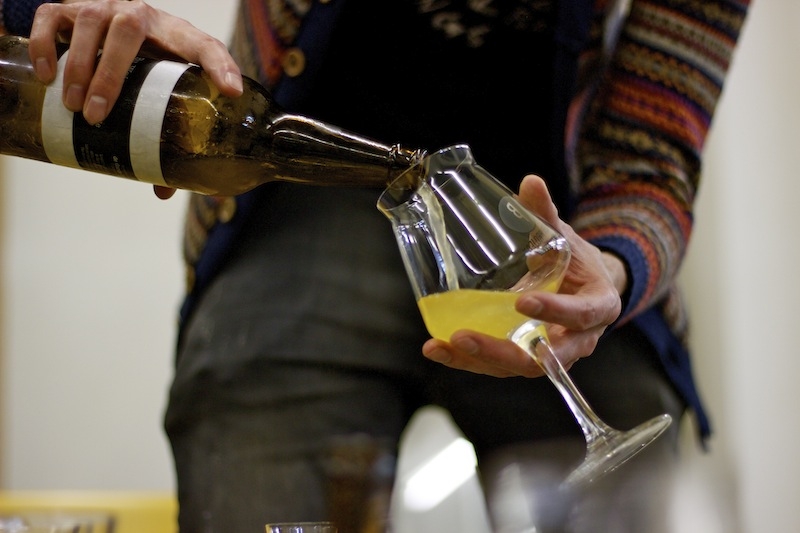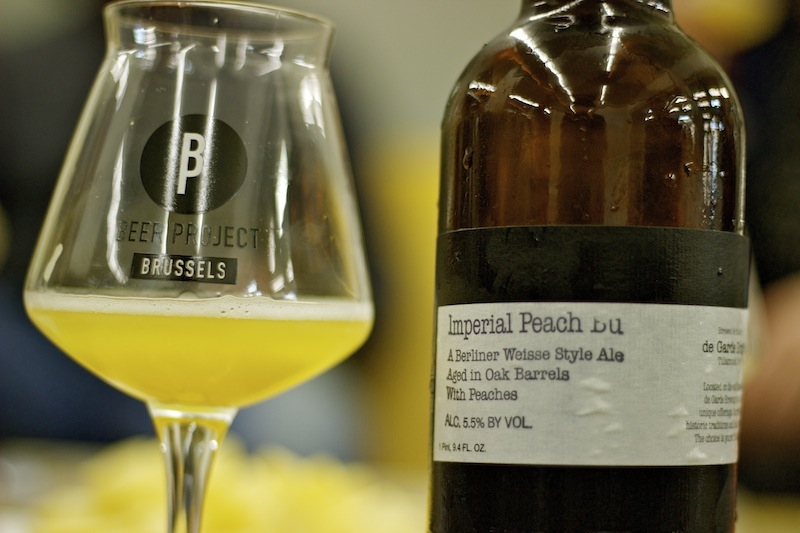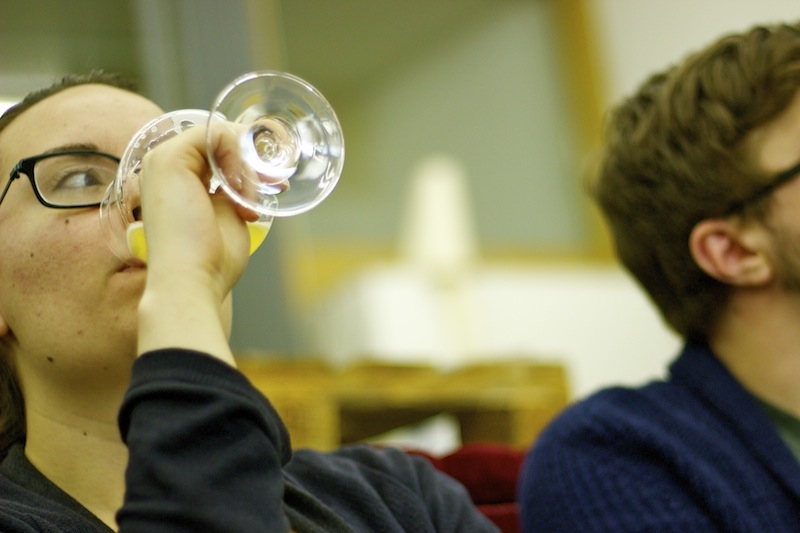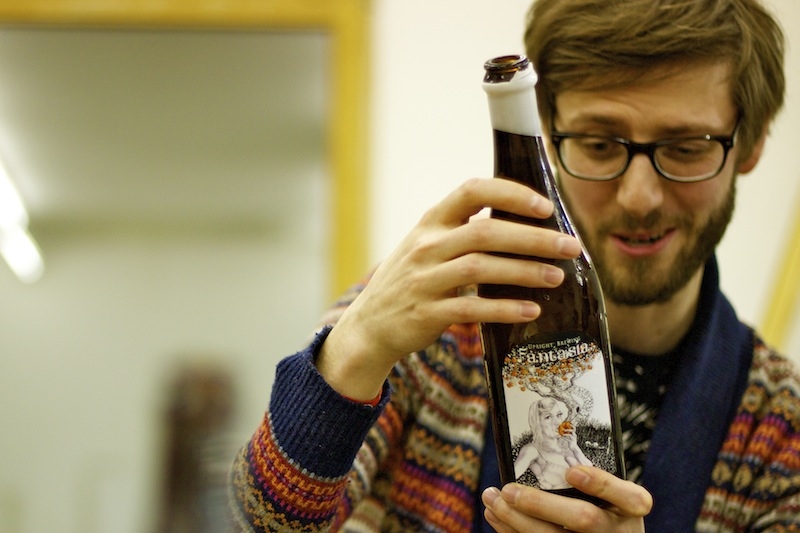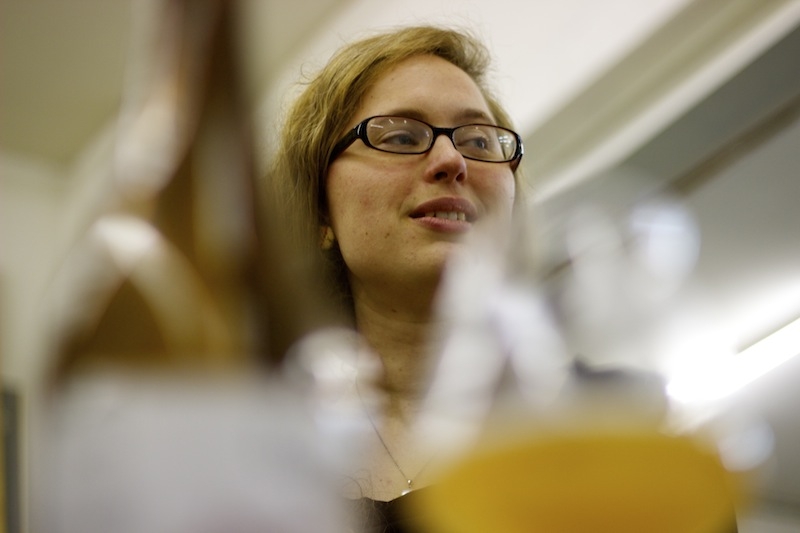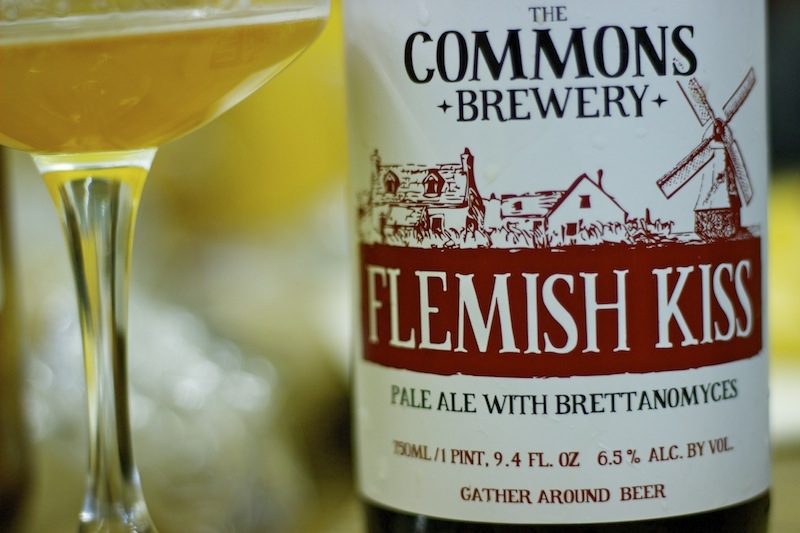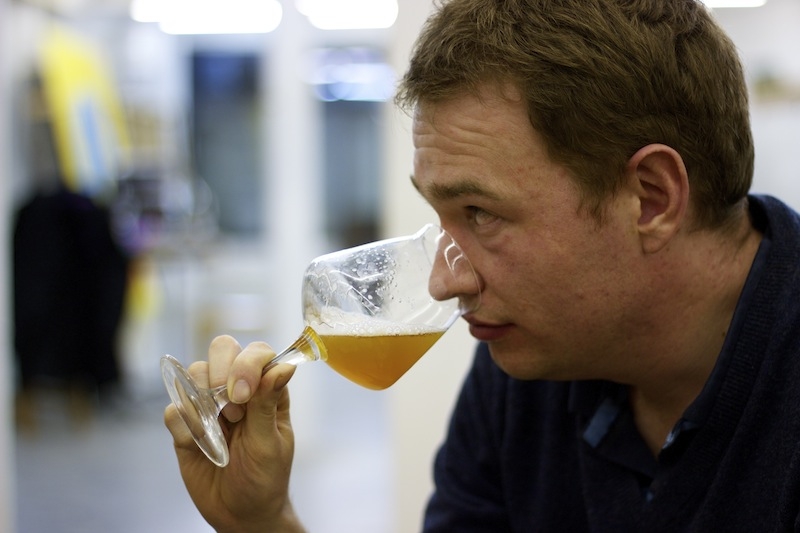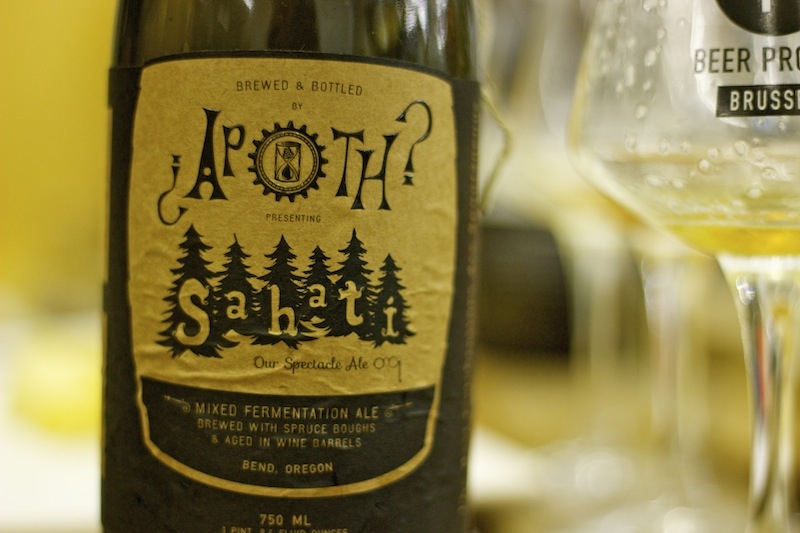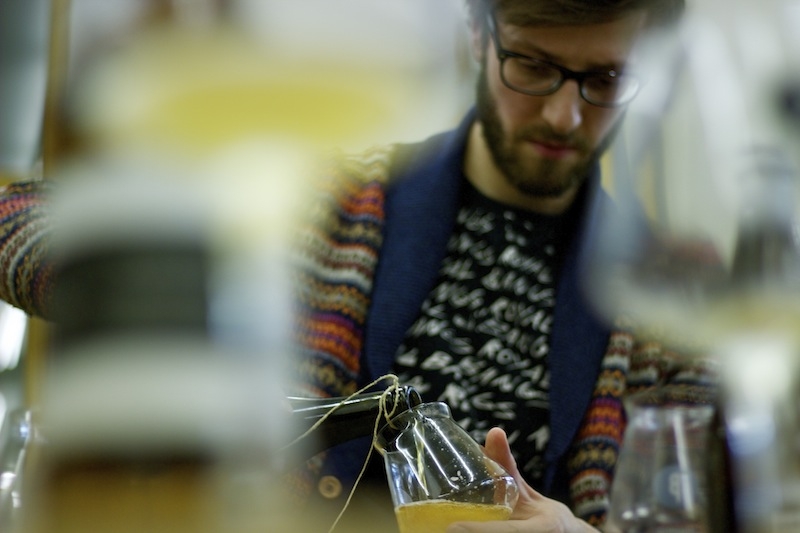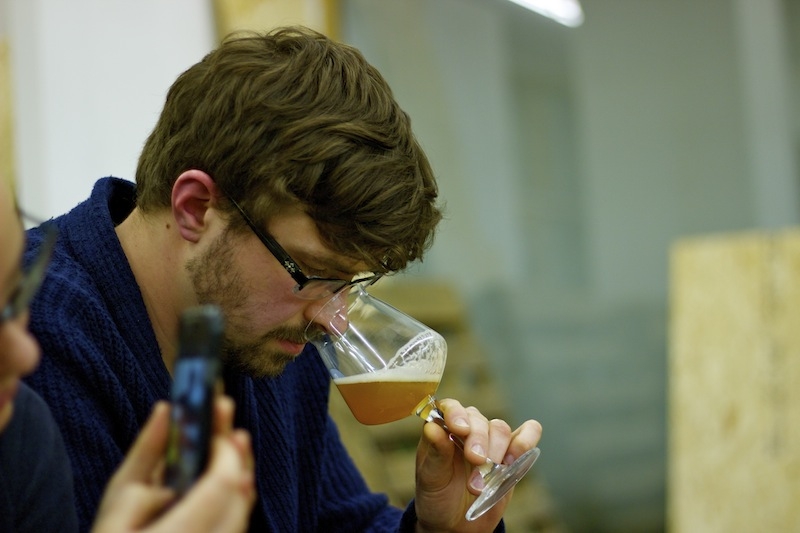Belgians aren’t the only ones who do sour. America has taken tart to heart and now boasts an impressive array of acidity in its breweries.
The state of Oregon in the Pacific Northwest of the U.S.A. leads the way in this regard but that’s not surprising given its diverse brewing landscape.
Official statistics at the end of 2014 list 221 breweries in Oregon (that doesn’t include brewing companies – there are another 179 of those). That’s more breweries per capita than in any other state in the U.S.
There are more breweries in Oregon than there are in the whole of Belgium.
Of that long list of breweries, many are brewing sour beers exclusively. So what better way to explore this growing phenomenon than a tasting of sour beers from Oregon?
SOUR BEERS FROM OREGON
Our host for the evening is Dimitri Van Roy. Dimitri is ably assisted by Pacific Northwest native, Lana Lile. Each of the bottles has been sourced on one of Dimitri and Lana’s recent trips to the States to bring back beers from Oregon.
Dimitri’s guests include editor of Belgian Beer and Food magazine Paul Walsh, Sébastien Morvan from the Brussels Beer Project and some American friends living in Belgium.
THE (BITTER) APPETISER: BABYLONE (7 % ABV) – BRUSSELS BEER PROJECT
The venue for the evening is the new headquarters of the Brussels Beer Project, a 500 square metre space on rue Antoine Dansaert which by the end of the summer will be their very own microbrewery.
Its owners are known as ‘beer architects’ rather than brewers (their beers are brewed under contract at Brouwerij Anders) but their new brewery will be used to create 20 new beers every year on a small scale for the community of beer lovers they have nurtured and grown (into crowdfunders) since their first prototypes were launched in 2013.
To pay homage to our surroundings and to prepare our palettes for an evening of acidity, we open the evening with a bitter beer and the newest one from the Brussels Beer Project, proudly presented by one of its creators, Sébastien Morvan.
Sébastien tells us that Babylone has been several years in the making and explains that its name refers to the ancient capital of Mesopotamia and to the very origin of beers. He goes on to talk about how the recipe incorporates food that would otherwise be wasted. “We make this beer with bread taken from the bakery at the end of the day,” he says. “Each bottle contains the equivalent of two slices of bread.”
Even though it constitutes 30% of the beer’s make-up, it’s hard to pull out the bread in the flavour, and there’s a risk that native English speakers will have some difficulty with the name (Babylone sounds like a young child with no friends). However, the beer itself is well constructed, with a very present bitterness and hop aroma kept in check by a chewy malt backbone. It’s a good addition to the array of Belgian IPAs on the market and I would definitely pick up a bottle again.
And on to the sour beers from Oregon.
1: BU WEISSE (2.1% ABV) – DE GARDE BREWING
Based in Tillamook, De Garde Brewing are Trevor Rogers and Linsey Hamacher. Even though they’ve only been in existence for a few years, they have gained quite some notoriety, with the US beer journal, Draft Magazine listing them as a brewery to watch in 2014.
Bu Weisse is De Garde’s interpretation of a Berliner Weisse, a style of beer from Berlin that I have tasted many times before in the form of the classic Berliner Kindl Weisse and it’s certainly a style that warrants further investigation. It is traditionally known for a high malted wheat content with both spontaneous and pitched fermentation and sometimes a mash hopping. One major difference with the Belgian lambic is the much lower original gravity of the German style which results in its much lower ABV.
De Garde’s version is both barrel fermented and barrel aged, and fermenting it as they do with ambient yeast and bacteria, this beer is completely wild. While many breweries in the US make sour beers, there are not a lot – think Allagash and Russian River – who spontaneously ferment to achieve these flavours.
It’s a great beer to kick off the tasting, puckeringly tart and lemony with a medium to light body and wheaty haze and at 2.1% ABV it’s extremely drinkable. It had enough zing to perk us up in our seats without knocking us over.
2: IMPERIAL PEACH BU (5.5% ABV) – DE GARDE BREWING
The second beer was also from De Garde – their Imperial Peach Bu – essentially a fruited iteration of the first beer. The peaches are freshly picked in Oregon and Dimitri and Lana fill us in on the favourable climate and passion for growing fruit in the Pacific Northwest.
We share a joke at the ‘Imperial’ reference in the title of the beer, a term generally used for beers that are extremely strong with intense amounts of malts and hops, often upwards of 10% ABV. De Garde’s Imperial Peach Bu comes in at 5.5% ABV. I suppose when you consider that their BU Weisse is 2.1% ABV, it might be considered to be imperial.
It’s not like De Garde don’t brew higher gravity beers. They’ve got a wild red ale blended in port, bourbon and red wine barrels called ‘Banks Again’ which clocks in at 9.4% ABV and a dark wild ale aged in oak barrels with coffee called ‘Café Samson’ which is 11.5% ABV. “Just because a guitar player is able to play a complicated solo doesn’t mean they have to do that in every song”, comments Paul Walsh. “It’s the same in brewing. Not every beer needs to be extreme.”
Imperial Peach Bu has a stone fruit, peachy and slightly acetic aroma with a softness in the mouth and nice dry finish.
3. FANTASIA (5.75% ABV) – UPRIGHT BREWING
The third of our beers from Oregon sparks the most discussion, a barrel fermented beer, also with Oregon peaches, which undergoes an extended bottle conditioning before being set upon the world.
Upright Brewing have given a nod to Belgian brewing tradition in the names of their core range (beers called Four, Five, Six and Seven), each of which is named after their starting gravity in old school degrees, a practice still maintained at the Trappist breweries of Rochefort and Westvleteren.
Fantasia has a funky aroma and we have great fun scrambling for the right words to describe it. Is there something of sweaty barnyard animals? Does it have a cheesy aroma? Sour milk? Is it metallic? Does it smell syrupy?
In the background there is also a lot of fruit, not only peaches and apricots, but also some lemon and red berries. It’s sharp with a high carbonation profile and all those challenging notes from the aromas that we found so hard to articulate are there in the aftertaste too.
4. FLEMISH KISS (6.5% ABV) – THE COMMONS BREWERY
The label adorning the 75cl bottle of Dimitri’s fourth beer is clean with a classic style font and uses three simple colours to convey all the information we need, including the depiction of a Belgian farmyard scene, complete with outhouses and windmills.
The Commons is a three-man outfit operating out of Southeast Portland and was born in the garage of Mike Wright under the name of ‘Beetje Brewery’. ‘Beetje’ pronounced ‘bay-che’ is the Flemish word for ‘a little bit’.
Being first and foremost a top-fermented American Pale Ale, Flemish Kiss offers something quite different from the previous beers in the tasting with the more prominent use of noble hops and a touch of light munich, crystal and caravienna to deliver an orange colour and bring a bit of meat into the malt profile.
The ‘sour’ element of this beer derives from a healthy dose of Brettanomyces in second fermentation, a slow-working yeast strain which can produce a mix of tart, tropical fruit and sometimes horse blanket notes, as well as a pronounced effervescence and dryness.
There were throwaway comparisons, not with perhaps the most famous of Belgian Brett beers – Orval – but with beers from the South West Flanders red-brown style, perhaps because we picked up some red berry and winey fruit notes in the nose, but the funkiness is there in abundance too.
5: SAHATI (11% ABV) – THE ALE APOTHECARY
“They can’t use the name of the brewery on the label,” Dimitri tells us pulling out the final bottle of the evening. “Legislation obliged them to change it when they put their name on there initially.” It seems the American government were worried about people mistaking the beer for medicine. The bottles are instead now labelled ?Apoth?.
The Ale Apothecary is one of a group of well-known breweries from Bend in Oregon. Despite the obsession with hops all over America, this brewery uses only one hop variety (Cascade) and they mash, ferment, age and condition in wooden barrels so that their beers enjoy exposure not only to their own yeast strains but whatever bacteria comes in through the window.
This particular beer is an interpretation of the traditional Finnish sahti, a beer made in a trough-shaped tun called a kuurna. The Ale Apothecary created their own kuurna by felling a 200-year old Engelmann spruce tree on brewery property and creating their own natural lauter tun, layering the bottom with spruce branches and using the needles as a natural filter. Lana was on hand to pass around some photos of the process on her phone.
The result is a beer which is really unusual – but not unpleasant – with an overwhelmingly woody and sprucey character. There’s a waxiness in the mouth you might associate with a spruce tree, perhaps imparted from resinous oils in the kuurna.
It left us wondering what the original sahti’s might taste like in comparison.
So we pledged there and then to go to Finland.
But only after a trip to Oregon.


